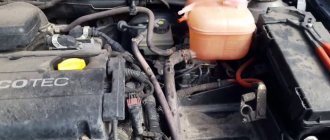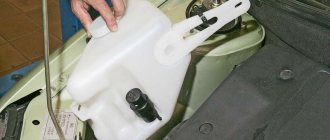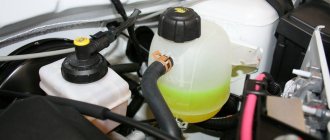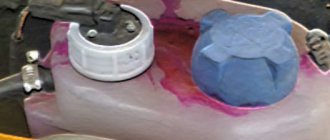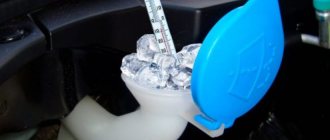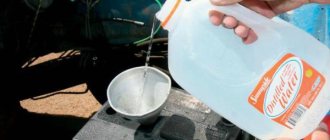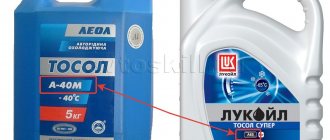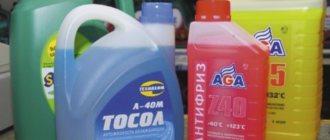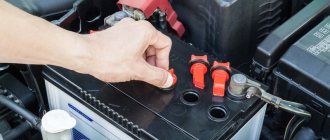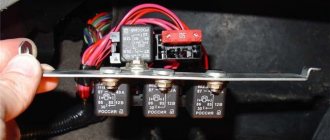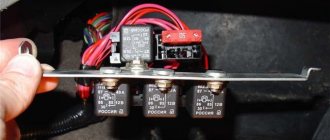Hello, dear friends! As part of our material today, I’ll tell you how to drain water from the washer reservoir and what may be required for such tasks.
Winter is approaching, and therefore before the onset of cold weather it is better to fill it with fresh and high-quality anti-freeze. We have already talked to you about choosing the best anti-freeze for your car, so just follow the link and read our previous material. It will be interesting and very useful.
Yes, the easiest way to drain the washer fluid is to dismantle the tank and pour out all the residue. But it is not always possible to easily remove the knot. The reason lies in difficult access to the tank on some cars, or because the liquid is simply frozen.
Stop prohibited road sign: zone and duration of action that it prohibits
- the water in the washer is frozen, and frozen water cannot be used in any way;
- if it is ordinary water, when the temperature drops it can cause serious problems;
- tap water clogs the windshield washer nozzles;
- There are often fakes on sale that are best removed from the system immediately;
- if mixed incorrectly, a chemical reaction may occur and the antifreeze will turn into jelly;
- there is a possibility of failure of the washer motor;
- The liquid is old and no longer copes with its tasks.
There are more than enough reasons. Therefore, the driver will have several compelling arguments in favor of draining the old fluid and pouring new fluid into the tank.
Many people don’t want to dismantle numerous components just to get to the washer tank and pour out all the remnants of the composition.
Therefore, it is important to look for alternative ways to solve this issue. Please note that every car is different and may have a slightly different reservoir location.
Check your owner's manual, or just look under the hood. Assess how easy it will be for you to dismantle the unit if you have:
- Lada Granta;
- Hyundai Solaris;
- Volkswagen Polo Sedan;
- Lada Vesta;
- Skoda Octavia;
- Ford Focus;
- Renault Logan;
- VAZ 2114;
- Skoda Rapid;
- Kia Rio;
- Mercedes C class;
- Mitsubishi Galant, etc.
I propose to separately consider several methods when the washer is in a liquid aggregate state, as well as in situations where it is frozen. To drain, you will first have to defrost the composition.
Instructions for replacing and repairing the tank
Self-replacement of the Lada Kalina thermostat step-by-step instructions
Replacing the washer reservoir is usually done as a result of its failure, which cannot be repaired. In particular, if the CP is cracked and it is no longer possible to restore its integrity.
Using the example of a VAZ 2114 car, let’s look at how to remove the washer reservoir:
- First open the hood. Before removing the BO, it is necessary to drain all remaining liquid from the container. If the liquid level in the container is high, then unscrew the cap of the washer reservoir, this will reduce the pressure in the system.
- Then the BO is removed from the grooves; to do this, it can be pulled up, and placed in such a way that you can easily dismantle the electric motors.
- You need to disconnect the contacts from the motors, as well as the water supply pipes.
- Next, the electric motors are removed from the container body - for this you can use a regular screwdriver to pry them off (the author of the video is the menstimecom channel).
As you can see, there is nothing complicated in removing BO. It is much more difficult to repair the washer reservoir. If the container is cracked, it is not a fact that it can be repaired, since everything depends on the size of the crack and its location.
If you don’t know how to seal the washer reservoir, then you have several options:
- For gluing, you can use special glue or cold welding. Before applying material to a crack, the BO must be thoroughly washed, and the area to be patched must also be degreased. Glue or cold welding is applied to the crack, while it is necessary to grab a few more millimeters from each edge of the crack. Depending on the type of glue and cold weld, the waiting time for the material to dry can range from 30 minutes to several hours.
- If the crack or hole is small, you can try to treat it with regular sealant. In this case, the repair procedure looks similar - the surface is first washed and then degreased. A certain amount of sealant is applied to the hole, which should completely fill the crack and the space around it.
- Another option that is best suited for larger cracks is the use of special plaster tape. It is also installed on a degreased surface, but before installation the tape should be coated with epoxy, and the material should be applied in several layers until all the cracks are closed.
- If all these options do not help you, then you can use a soldering iron or wood burning machine. With the help of these devices, the structure of the container is softened, which makes it possible to restore its integrity if the damage is minor. Additionally, after treatment with a soldering iron, the damaged area of the BO can be covered with cold welding.
Draining liquid without dismantling
I cannot guarantee that the methods discussed will suit any car. There is only one universal method, but its use should be approached with extreme care.
First, look at the owner's manual for your car and see how the manufacturer itself recommends draining the windshield washer fluid from the windshield washer reservoir. Then decide whether to follow these instructions or use an alternative method.
Why does it need to be changed?
It is impossible to answer this question definitely, since there are quite a lot of reasons for a change. If the system is filled with water, it can simply freeze in winter, which can lead to damage to the washer pump, rupture of the tubes supplying the composition to the nozzles, and failure of the sprinklers themselves. The use of tap water is also undesirable because precipitation, with prolonged use, leads to clogging of the tubes and nozzles.
Sometimes problems arise when using anti-freeze products, especially when purchasing counterfeit products. Unscrupulous manufacturers sometimes use alcohol-containing compounds that pose a health hazard. If unpleasant odors appear during use, it must be replaced immediately. Sometimes it happens that by mixing products from different manufacturers, a chemical reaction occurs and the liquid turns into a jelly-like composition.
Driving license training from the military registration and enlistment office: conditions for obtaining
First way
. It is universal and will fit all cars without exception. The idea is to squeeze the liquid out through the nozzles themselves. Extremely simple, but with its pitfalls. It is better to use it in situations where there is very little composition in the tank, and you do not have the time or opportunity to completely drain it. The simplicity lies in the fact that here you just need to turn on the washer and wait until the reservoir is empty. But there is also a difficulty. Working without stopping, the washer motor may fail. Be sure to give him time to rest.
Second way
. It involves draining using a hose from the washer itself. On many cars the method works easily and simply, and there are no problems with its implementation. You will need to remove your summer or winter windshield wiper blades by snapping them off. Be sure to wrap fabric around the leash. Next, open the hood and prepare a container for draining. Find the hose in the area where the injectors branch. Disconnect the hose and lower its end into the bottle. Turn on the engine and activate the window washer. The liquid will begin to gradually drain.
There is another option. It involves draining directly from the tank itself.
Third way
. Again, not suitable for all cars. Here you need:
- gain access to the tank;
- To do this, remove the linings or other easily dismantled elements;
- prepare a container for draining;
- find where the motor is located;
- unscrew the electric motor from the tank;
- place a container under it;
- wait for complete drainage;
- turn on the washer motor;
- return all parts to their place;
- add new fluid.
Alternatively, you can use a large syringe with a nipple attached to it to reach the bottom of the tank. The method is not the fastest, but you don’t have to remove or dismantle anything.
But what you shouldn’t do is insert one end of the hose into the tank, try to suck the mixture out with your mouth, and pour it into a container for draining. Swallowing such a liquid, even in small quantities, can cause serious poisoning.
What do you put in the washer reservoir?
Just a few decades ago, plain water was used as a washer fluid. Firstly, then the washer was not available everywhere, and secondly, then there were no special special liquids.
Then the number of cars increased, climatic conditions changed, road safety requirements increased, and many other factors began to force car manufacturers to equip their cars with washer systems.
Later, all kinds of special liquids began to appear, in which there was a huge concentration of chemical components. They contribute to better cleaning of the car windshield without leaving streaks on it. These liquids did not freeze at sub-zero temperatures.
Defrosting the washer
Sometimes it happens that the driver does not have time to change the composition in the windshield washer reservoir in time, and it gradually crystallizes.
And what to do with the liquid if it is frozen? That's right, defrost. There are several effective ways to do this:
- leave the car in a heated garage and wait;
- turn the engine on at idle to warm up the engine compartment;
- take it to the car wash and order a special defrosting service;
- if the tank is not full, you can pour boiling water inside;
- mix boiling water and anti-freeze concentrate, pour into the tank (first hot water, and then special liquid);
- add alcohol to the tank;
- use means to defrost locks and glass;
- use a regular household hair dryer with a suitable nozzle;
- remove the tank itself and take it to a warm room.
The easiest way to defrost is to remove the glass washer reservoir. But, as you already understood, this is not always possible. Therefore, we have to look for alternative ways to solve the current problem.
It’s definitely not worth experimenting excessively, pouring questionable liquids, or drilling and hitting a frozen tank. If there is a real opportunity and time to dismantle, do it.
Have you ever encountered similar problems? What way out of the situation did you find and what can you advise our readers?
Subscribe, leave comments, ask relevant questions and tell your friends about us!
Recommendations
Comments 85
Installing timing marks for Niva Chevrolet: step-by-step instructions with photos
Guys, I have never encountered such crap as is happening to me now... Yesterday I realized that the washer was frozen. I warmed it up, drained everything, filled it with anti-freeze at -30, poured it on the glass so that the remnants of the previous washer came out of the hoses and calmed down. This morning I went out and saw that the glass was covered with frost and decided that I would quickly spray it with anti-freeze and use the wipers to clean this whole thing up. Fuck there! It's frozen again! The anti-freeze product, tested by many car enthusiasts, has been purchased in large quantities from the same supplier for many years now. What the hell could this be?
Yes, it's crazy, why be surprised. Warm it up again, drain it. Or dilute it. And on the contrary, I leaked the one, thought Khrenovaya. I put it on the balcony and it doesn’t freeze at - 12 =)
Read also: Can your license be revoked for speeding?
So it doesn’t freeze in a bottle in my trunk. Could it be that the nozzles of the injectors are metal and because of this it freezes in the nozzles?
Try warming it up with your fingers, it helped me so much.
hmmm... I'll try. I'll go to the car right now. The main thing is not to freeze your fingers))
Try warming it up with your fingers, it helped me so much.
strange... So far it hasn’t frozen anymore O_o I’ll hope that it won’t freeze))
Guys, I have never encountered such crap that is happening to me now... Yesterday I realized that the washer was frozen. I warmed it up, drained everything, filled it with anti-freeze at -30, poured it on the glass so that the remnants of the previous washer came out of the hoses and calmed down. This morning I went out and saw that the glass was covered with frost and decided that I would quickly spray it with anti-freeze and use the wipers to clean this whole thing up. Fuck there! It's frozen again! The anti-freeze product, tested by many car enthusiasts, has been purchased in large quantities from the same supplier for many years now. What the hell could this be?
My anti-freeze also froze (perhaps there were remains of a fly swatter there), but we added industrial alcohol and it still froze =/ I’ll have to go to the subway again, defrost it and pump it out with a syringe. First time this has happened in 5 winters
The other day my husband and I were sucking out a fly swab with a syringe in my car =D wow, what a fascinating activity))) The main thing is to do it with a sense of idiocy. Had a blast)))
Ksyusha wrote above: syringe for Zhane. Business for a few minutes, that is, if the tank is full. I drained the same thing, I forgot that in the summer I filled it with distillate with a special tablet
